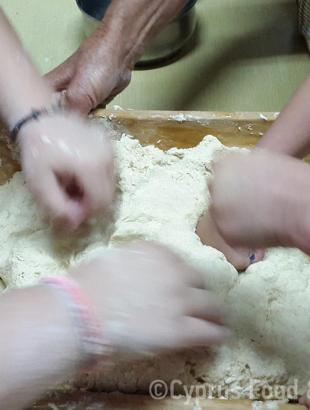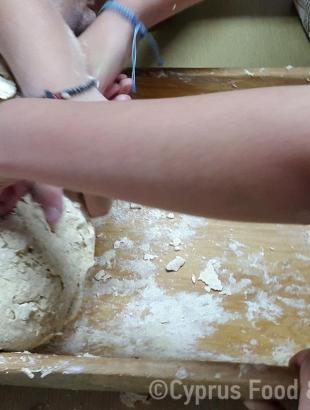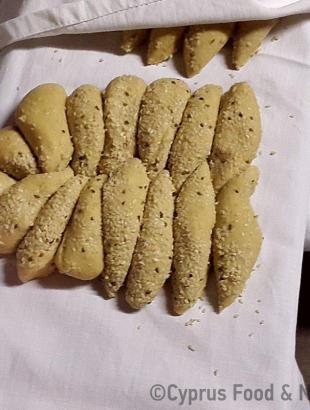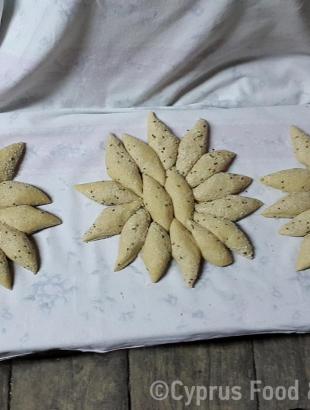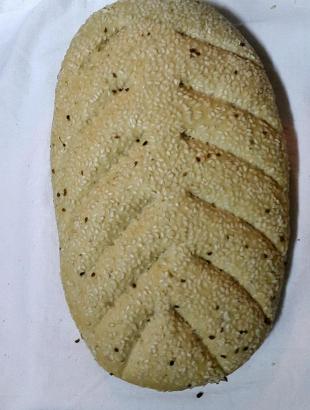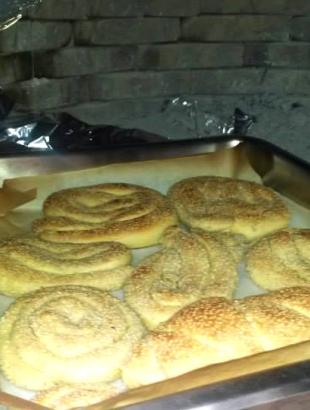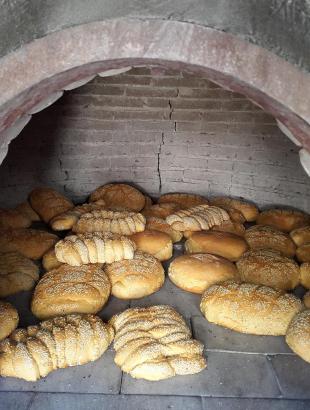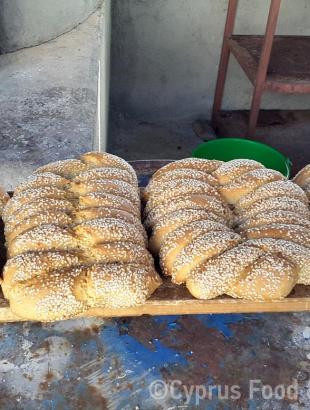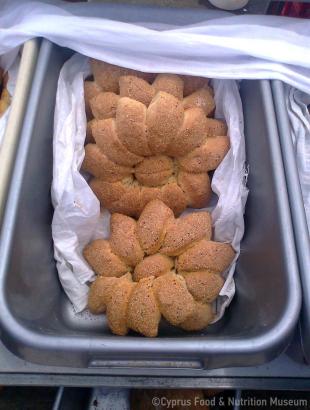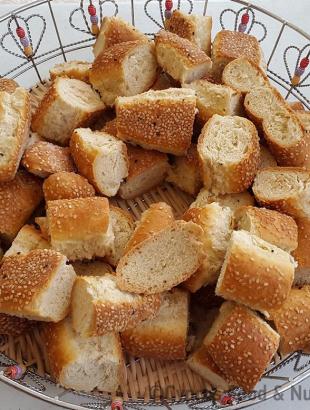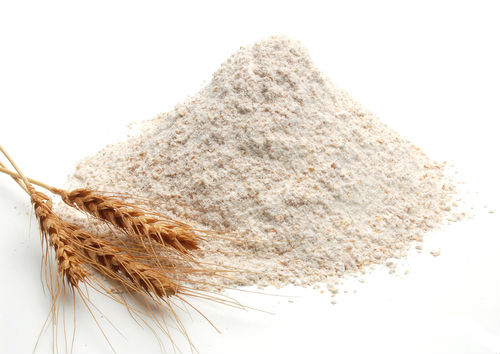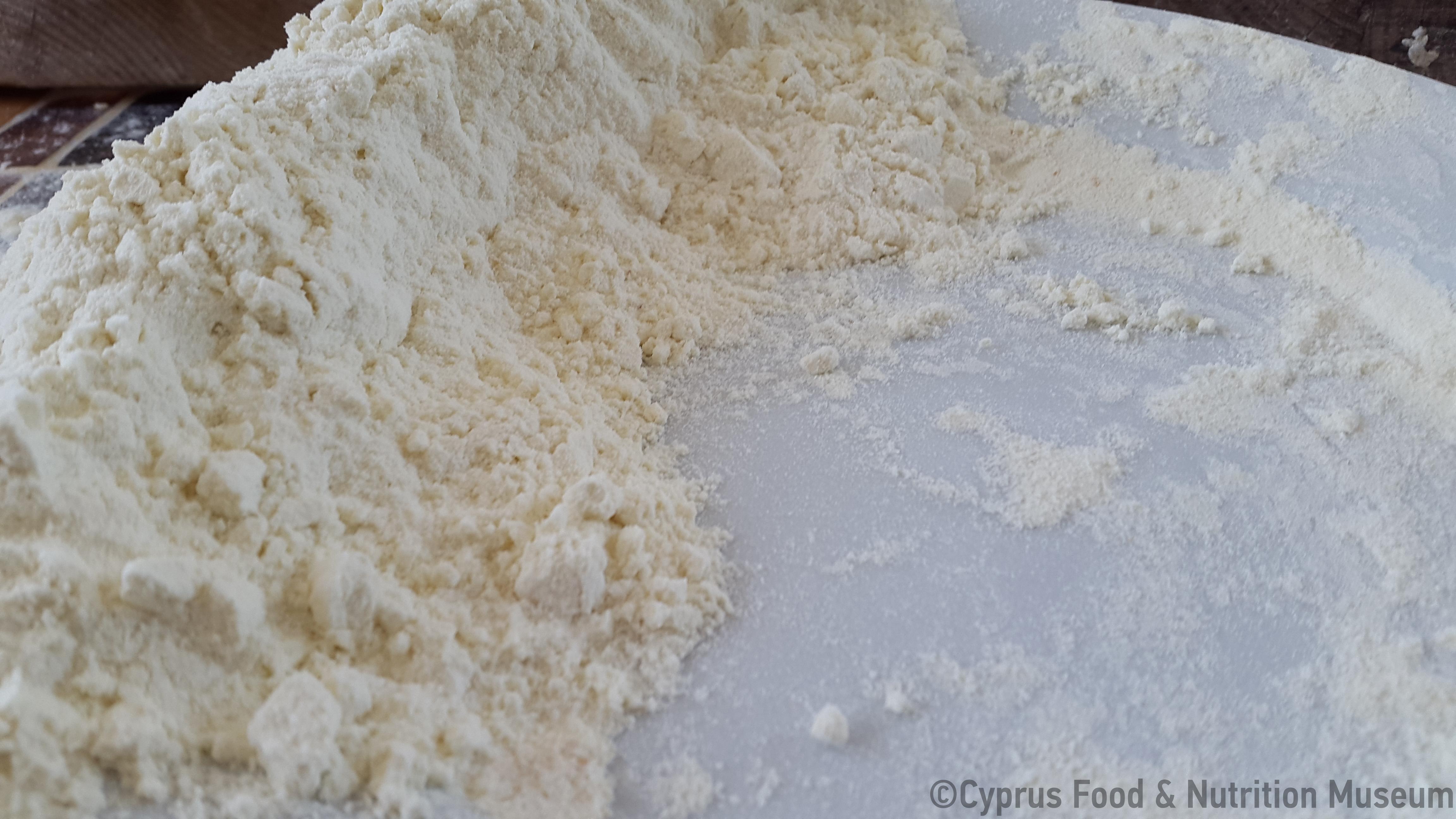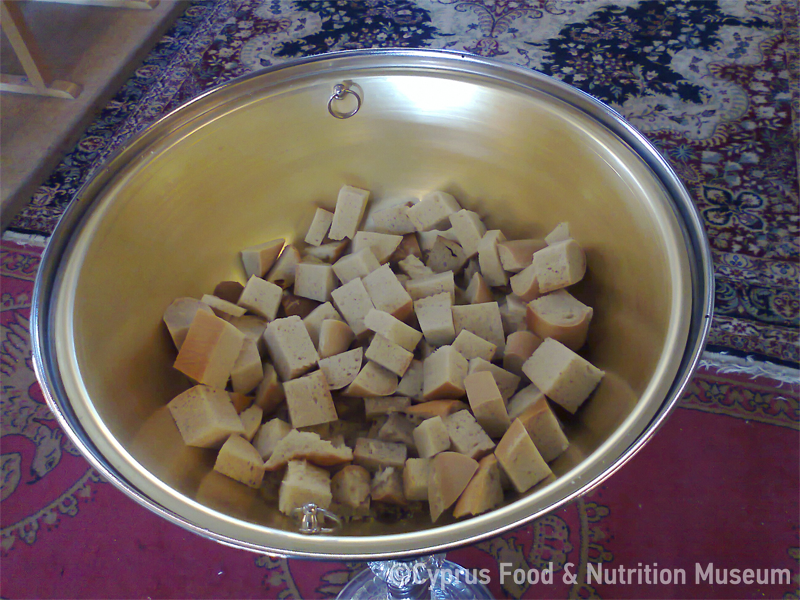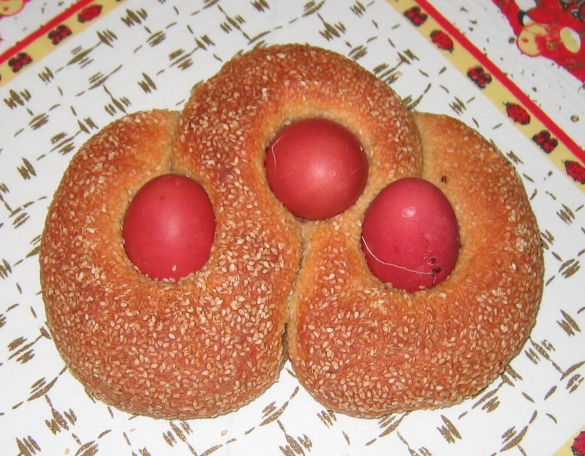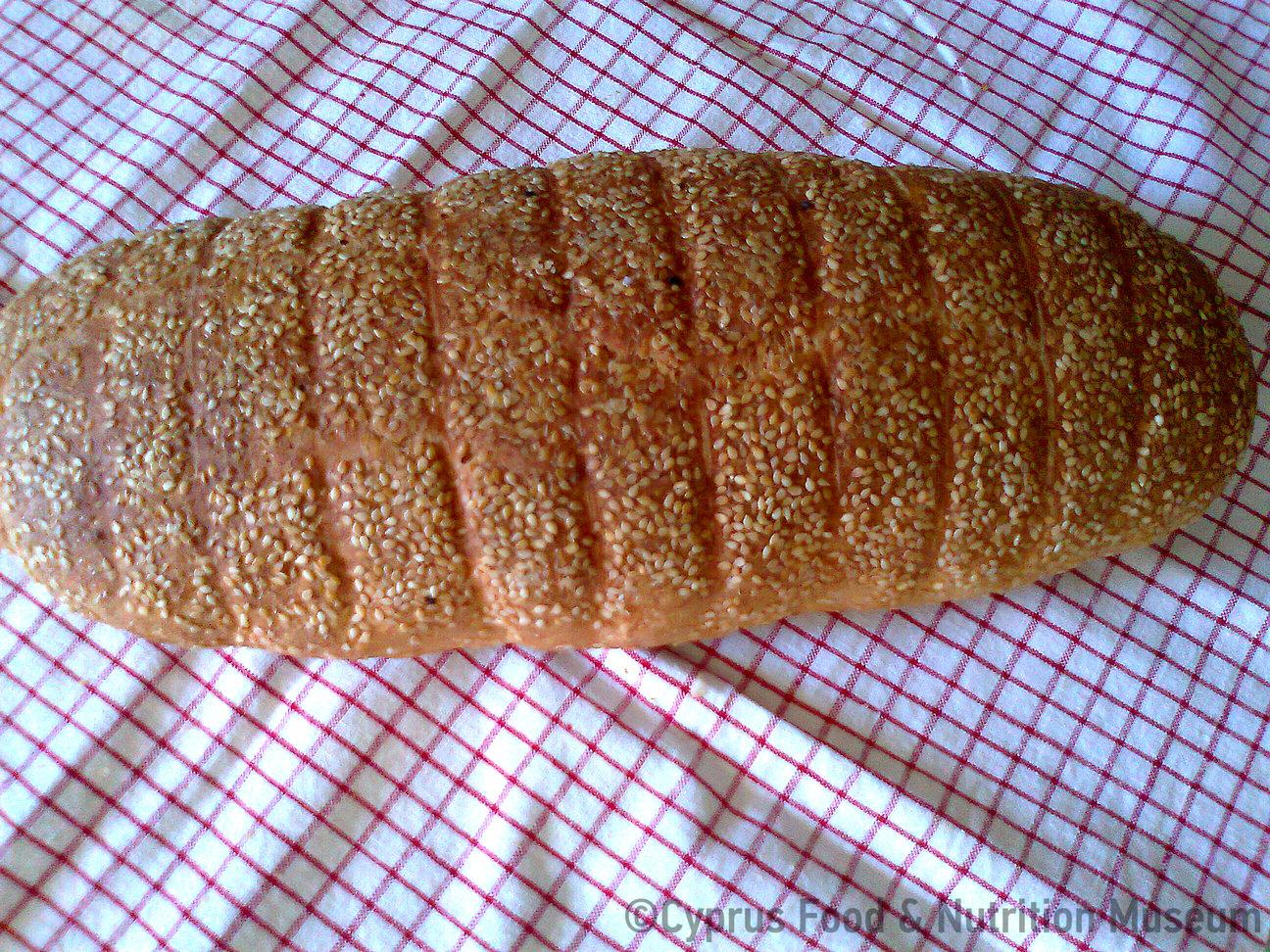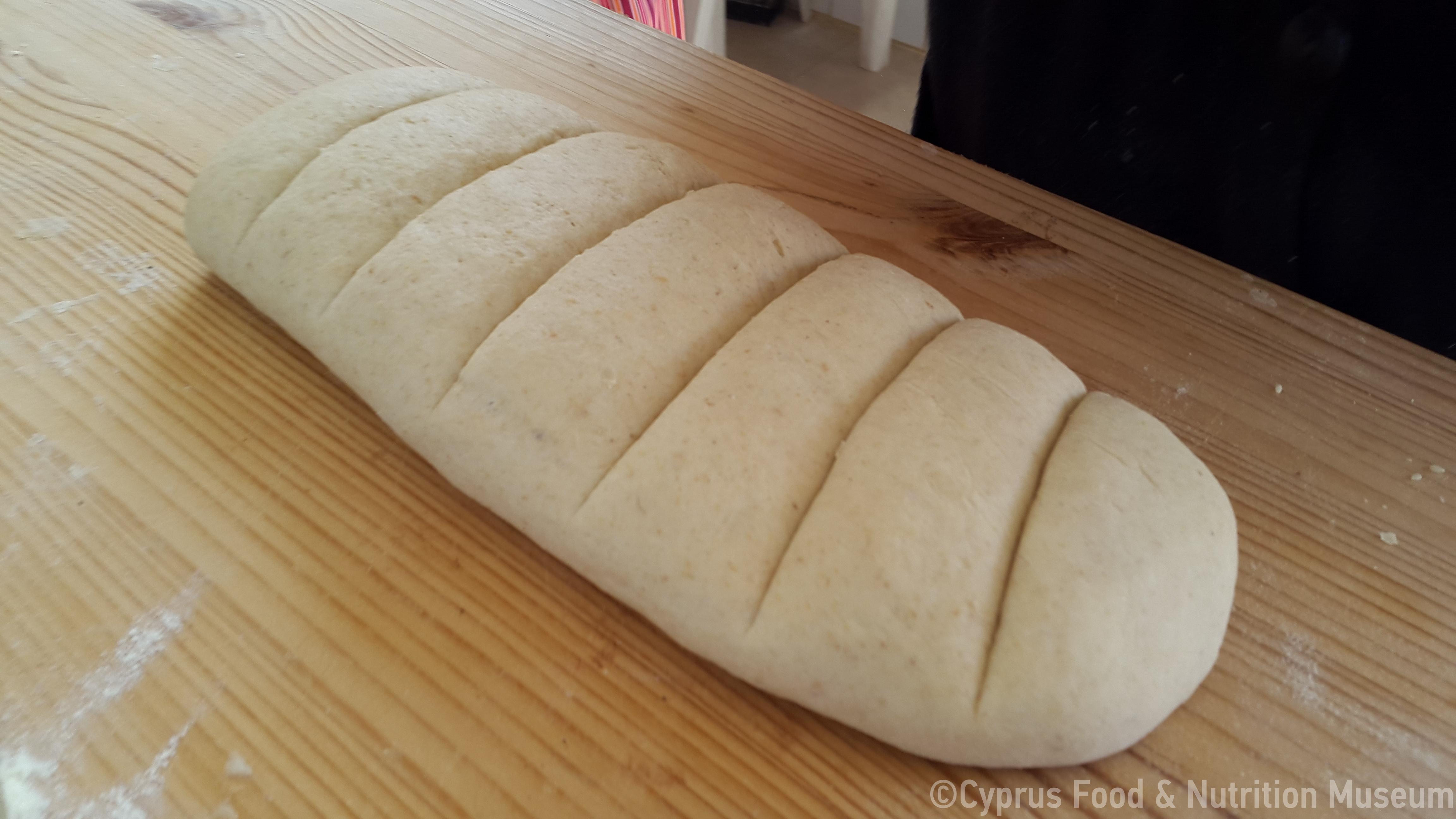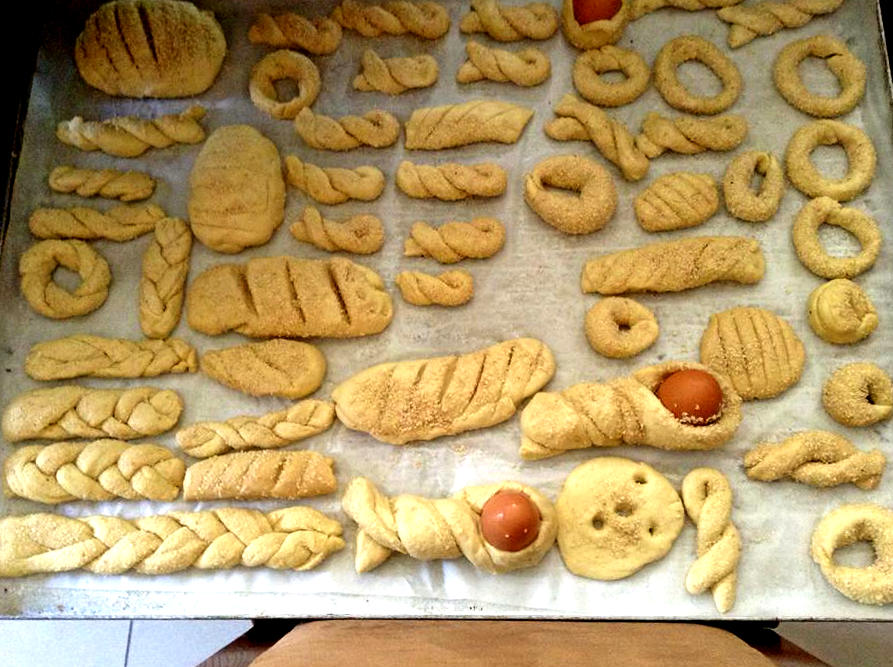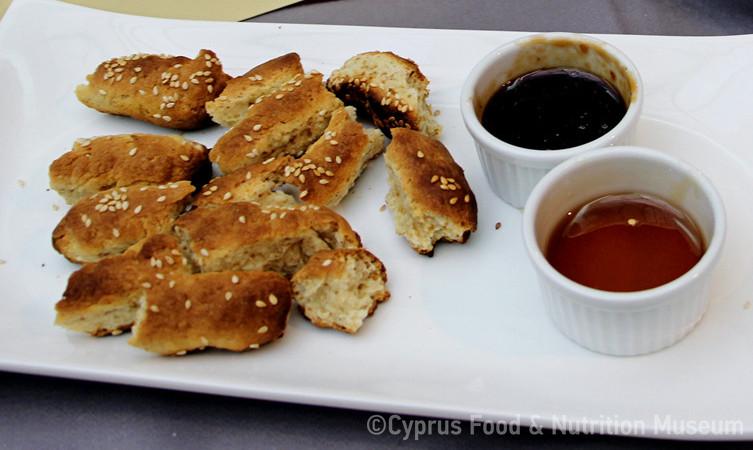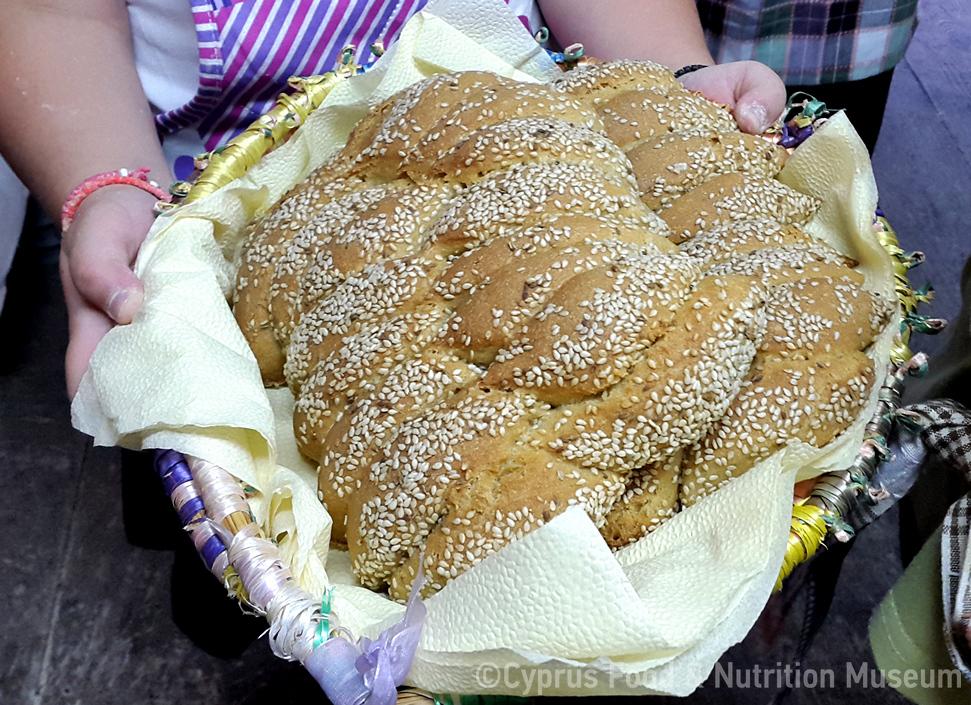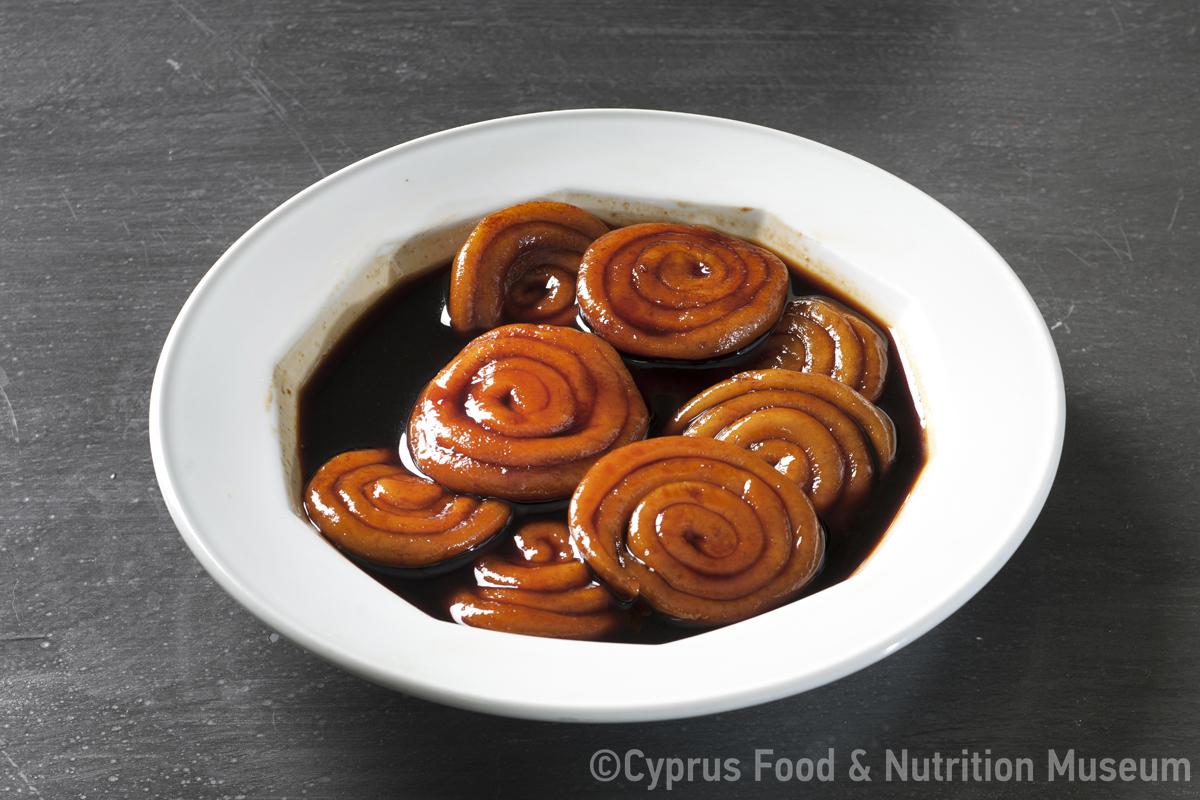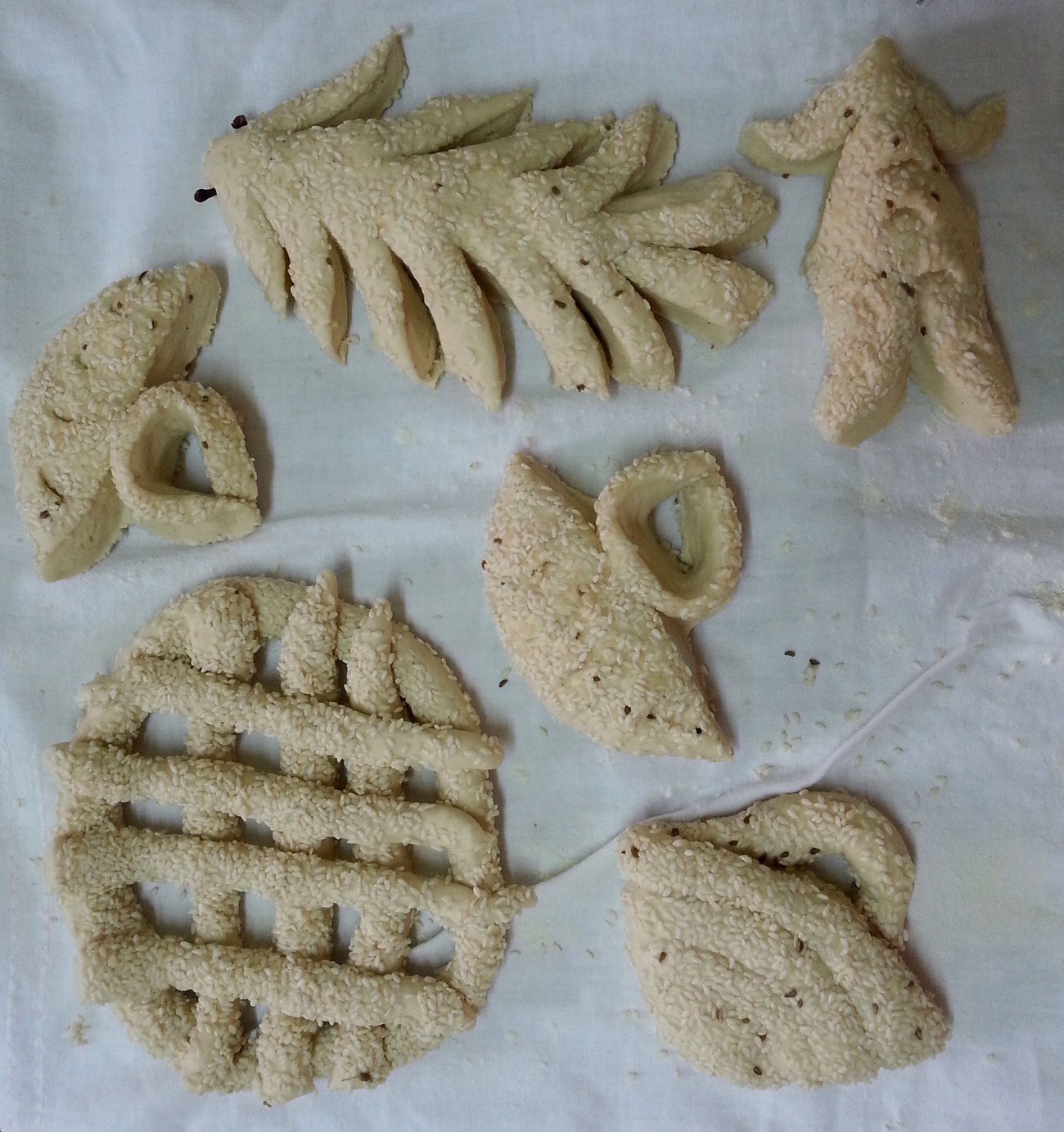After making the dough, the koulourka are given various shapes, such as oblong, rings, round but also avgotes, vatrahakia, zembilouthkia, stavrokoulloura etc for festive occasions.
Name - Recipe
Παραδοσιακά κουλούρια.
1 kg of flour (1/2kg plain (farina 00) flour, 1/2kg village flour)
A bit of salt
120 g traditional sourdough (size of 2 eggs)
Ground, mahleb, mastic, aniseed
Sesame seeds
Water (as much as needed)
In a bowl, mix the flour with the leavened sourdough, add salt, mastic, mahleb, lukewarm water and make a regular dough. Let it rise for 1-2 hours and give it various shapes like oblong, round etc Sprinkle them with blanched sesame seeds and aniseed and leave them to proof in a warm place covered with a clean cloth and a woolen blanket. Bake in a traditional oven for about 1 hour. (MANRE 2009, 71)
Baking in a traditional oven.
Functional and symbolic role
An Easter custom that is still preserved in the countryside today is traditional kneading. It is usually done on Maundy Thursday or Holy Saturday. Not on Good Friday because it is the day of the burial of Christ (MANRE 2009, 71).
In many villages it was customary since the old days to make stavrokoullouro, a large round bread with a cross in the middle, which was hung on the wall and eaten 40 days after Easter. This bun was believed to be blessed and sanctified the house. In some areas they would make round koullouria, which they would cut around the edges to resemble the thorn wreath worn to Christ (MANRE 2009, 71).
Additional information and bibliography
They would also make and continue to make, even nowadays, koullouria in various other shapes, such as vatrahakia, zebylouthkia etc (MANRE 2009, 71).
Ministry of Agriculture, Natural Resources and Environment (2009) "Για την αγρότισσα: Πασχαλινά ζυμωτά και φαγητά", Farmer, April-May-June 2009.
Varvara Yangou
